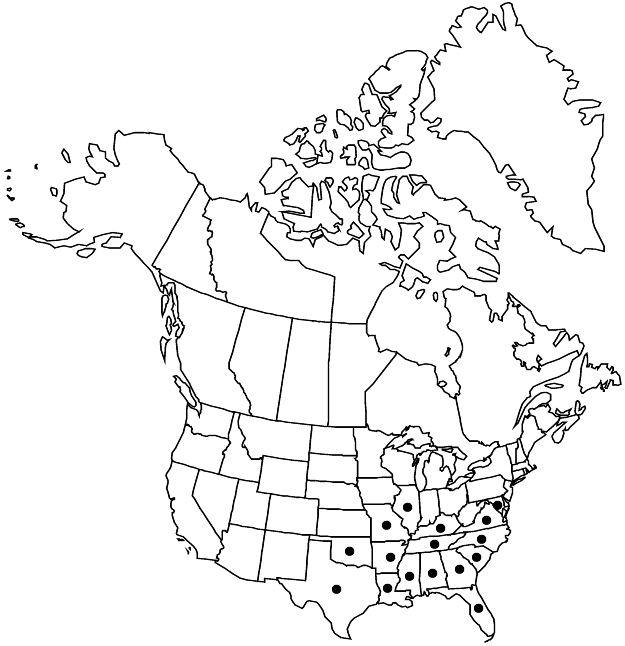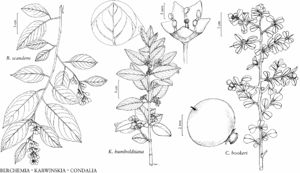Berchemia scandens
Dendrologie 1: 602. 1869.
Vines, usually climbing-scandent, twining to some extent, extending into crowns of trees. Stems to 10 cm diam., bark smooth, glabrous. Leaves glabrate (petioles sometimes sparsely short-pubescent at base); blade ovate to elliptic-ovate or elliptic, 3–6(–8) cm, base truncate to rounded or obtuse, margins entire or shallowly undulate-crenate (teeth at vein endings), apex obtuse to short acuminate; secondary veins 8–12 pairs, strongly parallel. Inflorescences 7–20-flowered. Drupes mostly blue-black to purple-black or purple-red, cylindric to oblong-ellipsoid, 5–8 mm, often glaucous.
Phenology: Flowering Mar–May.
Habitat: Riparian areas, ravines, swamps, bottomlands, upland forests.
Elevation: 0–200 m.
Distribution

Ala., Ark., Fla., Ga., Ill., Ky., La., Md., Miss., Mo., N.C., Okla., S.C., Tenn., Tex., Va., Mexico (Chiapas), Central America (Guatemala).
Discussion
According to R. K. Godfrey and J. W. Wooten (1981), the flowers of Berchemia scandens are functionally unisexual, the plants functionally dioecious. The staminodes remain enclosed by the petals in pistillate flowers.
Selected References
None.
